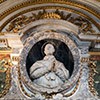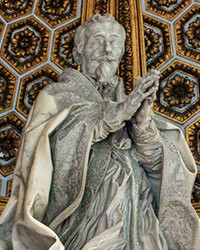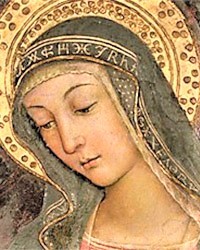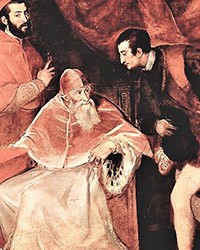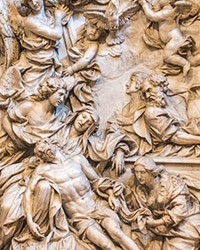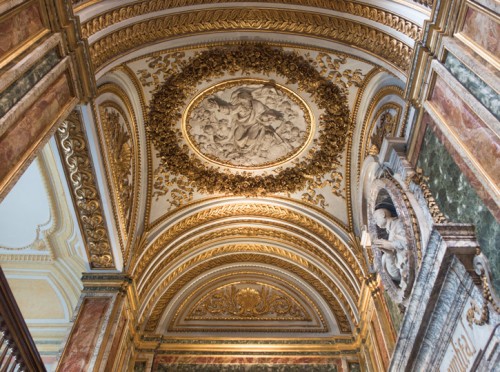
Medallion in the vestibule of the Chapel del Monte di Pietà, Palazzo del Monte di Pietà
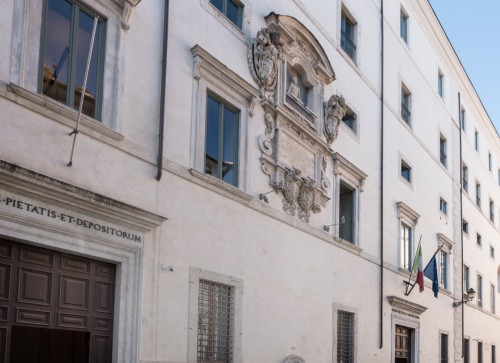
Facade of Palazzo del Monte di Pietà in Piazza del Monte di Pietà
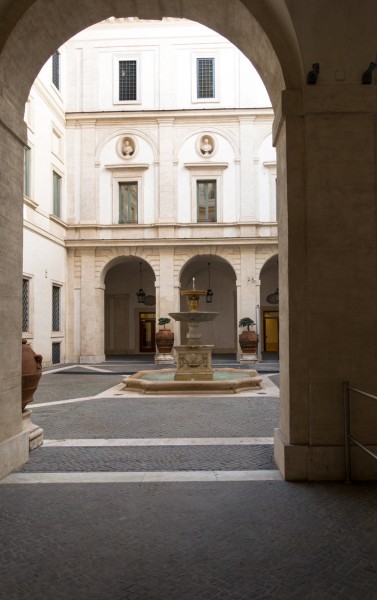
Entrance to the courtyard of Palazzo del Monte di Pietà, Piazza del Monte di Pietà
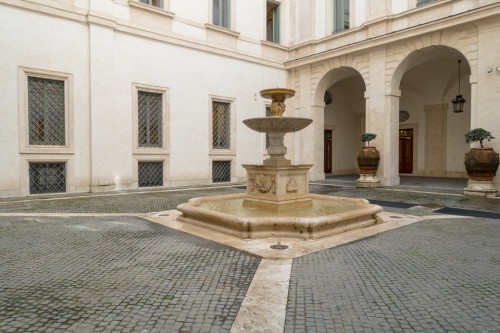
Courtyard of the Palace del Monte di Pietà
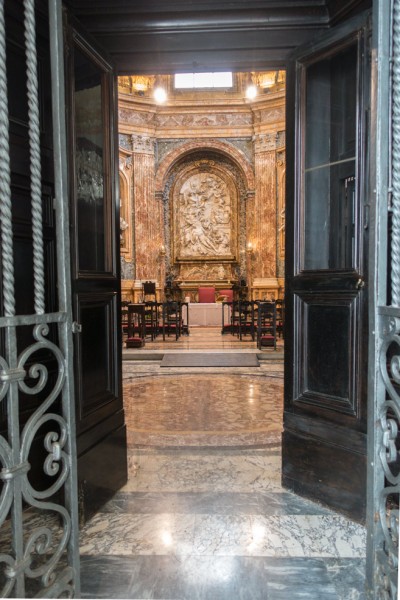
Entrance to the Chapel del Monte di Pietà in the Palazzo del Monte di Pietà
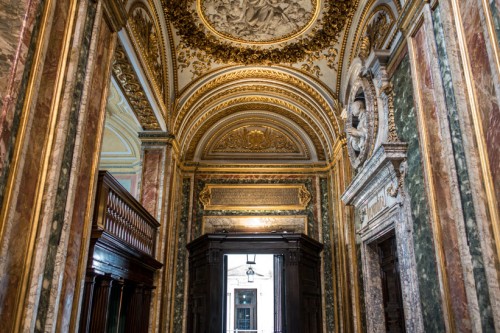
Vestibule of the Chapel del Monte di Pietà in the Palazzo del Monte di Pietà
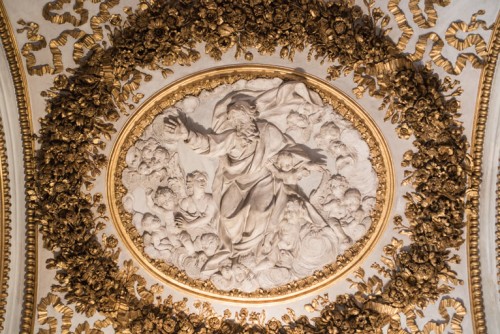
Medallion with a representation of God the Creator, Michele Maglia, vestibule of the Chapel del Monte di Pietà, Palazzo del Monte di Pietà

Bust of Cardinal Charles Borromeo, Domenico Guidi, Chapel del Monte di Pietà, Palazzo del Monte di Pietà
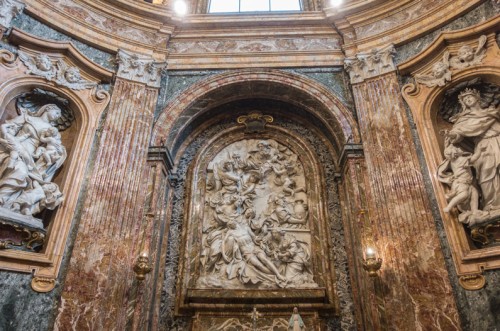
Main altar of the Chapel del Monte di Pietà - Lamentation of Christ, Domenico Guidi, Palazzo del Monte di Pietà
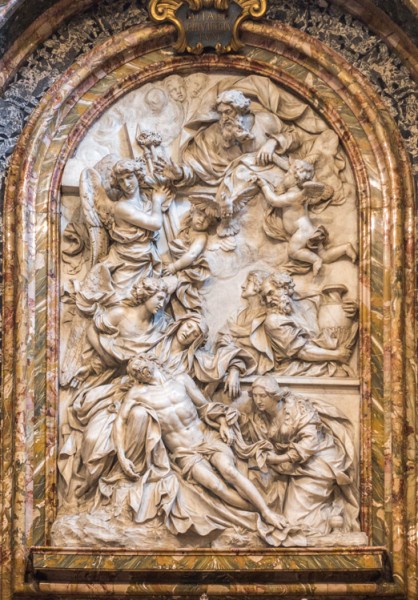
Main altar of the Chapel del Monte di Pietà - Lamentation of Christ, Domenico Guidi, Palazzo del Monte di Pietà
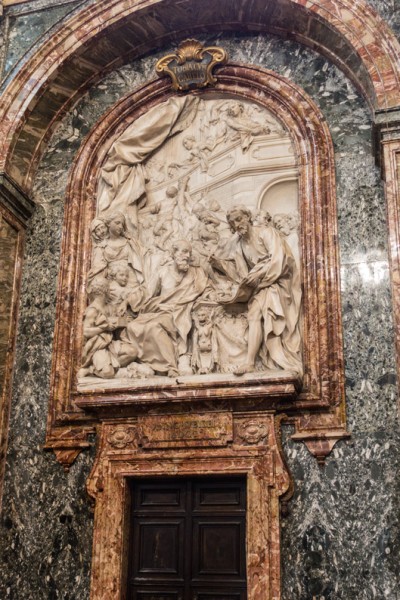
Tobias recovers the money deposit from Gabel, Pierre le Gros, Chapel del Monte di Pietà, Palazzo del Monte di Pietà
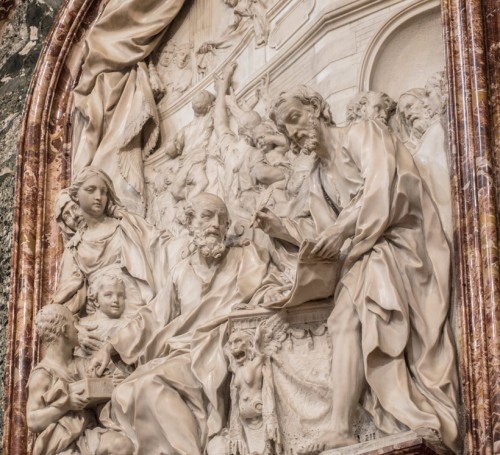
Tobias recovers the money deposit from Gabel, fragment, Pierre le Gros, Chapel del Monte di Pietà, Palazzo del Monte di Pietà
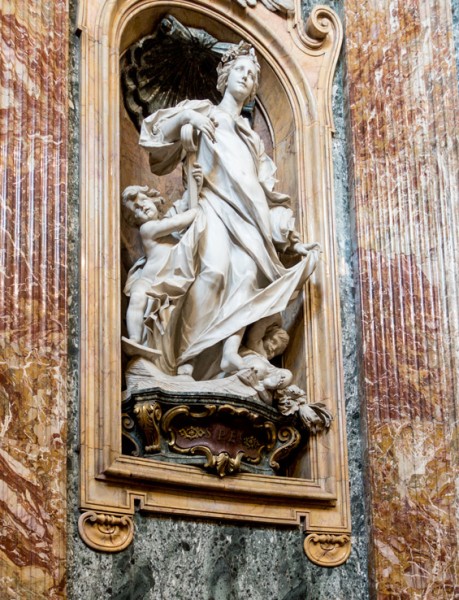
Allegory of Hope, Agostino Cornacchini, Chapel del Monte di Pietà, Palazzo del Monte di Pietà
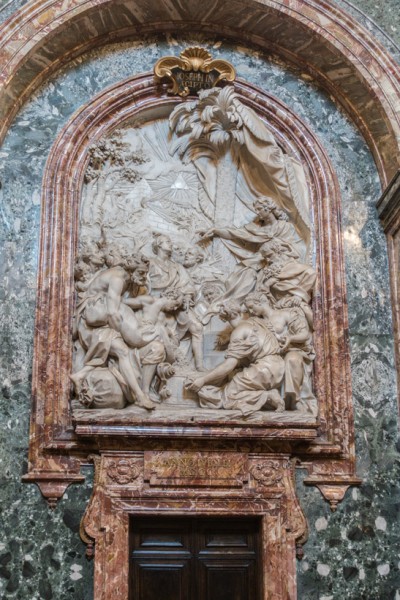
Joseph in Egypt, Jean-Baptiste Théodon, Chapel del Monte di Pietà, Palazzo del Monte di Pietà
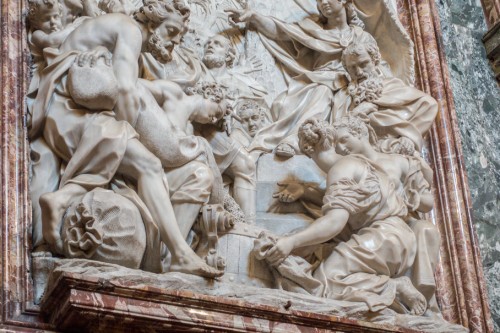
Joseph in Egypt, fragment, Jean-Baptiste Théodon, Chapel del Monte di Pietà, Palazzo del Monte di Pietà
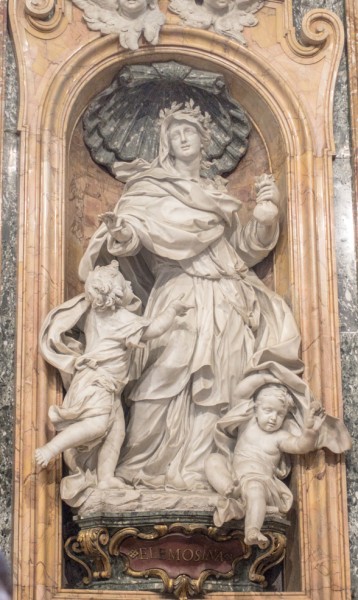
Allegory of Alms, Bernardino Cametti, Chapel del Monte di Pietà, Palazzo del Monte di Pietà
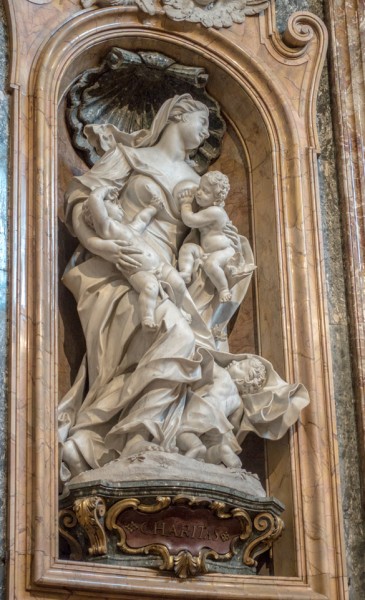
Allegory of Mercy, Giuseppe Mazzuoli, Chapel del Monte di Pietà, Palazzo del Monte di Pietà
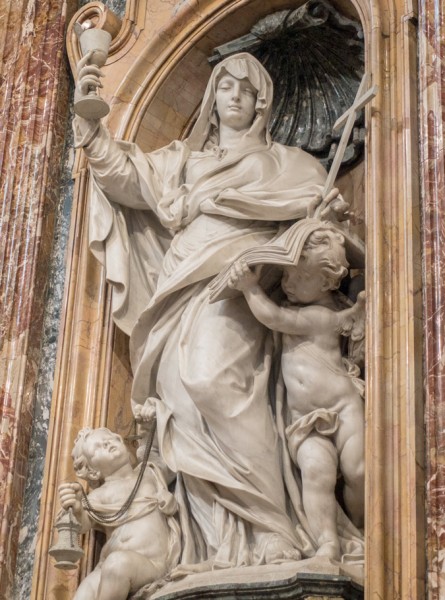
Allegory of Faith, Francesco Moderati, Chapel del Monte di Pietà, Palazzo del Monte di Pietà
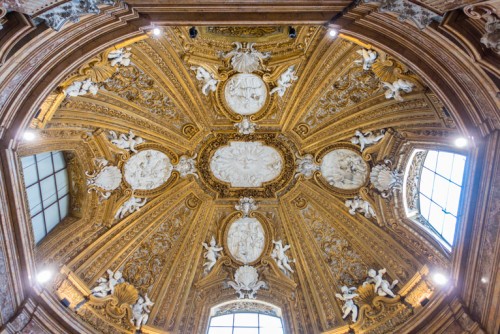
Vault of the Chapel del Monte di Pietà, Palazzo del Monte di Pietà
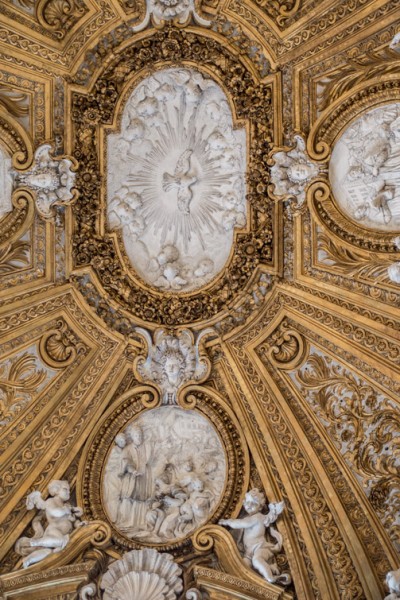
Vault of the Chapel del Monte di Pietà, fragment, Palazzo del Monte di Pietà
There is a place in Rome that can be visited only once a year. It is found in an inaccessible palace that currently belongs to a bank, but in the past was connected to an organization that had very little to do with a bank. This place is almost overbearing with its decorativeness, but at the same time, it captivates us with its exquisite selection of materials and the virtuosity of the works of art adorning it. The only surprising fact is that the chapel in question was created for a small number of members of a charitable organization that struggled against usury and brought help to the needy. This artistically splendid interior was created for the prayers and private services of a handful of people.
There is a place in Rome that can be visited only once a year. It is found in an inaccessible palace that currently belongs to a bank, but in the past was connected to an organization that had very little to do with a bank. This place is almost overbearing with its decorativeness, but at the same time, it captivates us with its exquisite selection of materials and the virtuosity of the works of art adorning it. The only surprising fact is that the chapel in question was created for a small number of members of a charitable organization that struggled against usury and brought help to the needy. This artistically splendid interior was created for the prayers and private services of a handful of people.
The Monte di Pietà banks had been established in various regions of Italy since the XV century. The name Monte di Pietà could be literally translated as “Mountain of Charity”, however the word monte in the past also meant “sum” and it is this second meaning, that plays a significant role here. This “sum of charity” is the credits given with no interest for small amounts and low-interest loans (up to 5 percent) for smaller which were to protect against usurious interest rates offered by the banks at that time. In exchange, valuable items were accepted as security – in this way creating sort of pawnshops. In the case of the credit recipient being unable to pay off his debt, these items were sold at a profit. The money was obtained from wealthy investors, meaning all those Catholics who possessed a surplus of cash and wanted to invest it in this very institution. And so, the archconfraternity with its propaganda directed against usury and Jewish banks, became very successful, at the same gaining enormous profits.

The Roman financial organization managed by the Santa Maria del Sacro Monte di Pietà Confraternity brought together approximately thirty men connected with the city, from old aristocratic bourgeois families. It was established during the pontificate of Pope Paul III in 1539, while in 1603 it found its residence at the Piazza del Monte di Pietà 32 in the then Santacroce Palace. This palace, expanded and modernized in subsequent centuries owes its present-day appearance to a reconstruction initiated in the XVII century when it was taken over by the archconfraternity. At that time the palace acquired its new, present-day name of Palazzo del Monte di Pietà.
One of the first steps undertaken by the archconfraternity was creating a chapel designated for its members. It was set up on the ground floor, on the right side of the entrance, with a rather inconspicuous door. It was designed in 1641 by two architects – Francesco Paparelli and Giovanni Antonio de'Rossi. Further works were undertaken by such outstanding architects as Carlo Maderno and his relative Francesco Borromini. The decorations, sculptures and numerous bas-reliefs that adorn the chapel were created within a period of over one hundred years, so it was not until the Jubilee Year of 1725 that the chapel was consecrated with great fanfare. There was a reason why this small architectural facility took so long to build. The concept had been changed numerous times over the years, being reduced, then suddenly once again enriched. The chapel was to constitute an example of Catholic values – charity, almsgiving, faith, and hope, but at the same time a monument of the anti-usurious practices of the institution that was responsible for its creation. Let us direct our steps to its interior.

Behind the entryway, there is a square vestibule. From the wall on the left, the bust of the praying Charles of Borromeo leans out to greet us – the protector and author of the statues of the Monte di Pietà organization, published in 1565. The sculpture was completed by Domenico Guidi – an artist who was particularly favored by the members of the confraternity. On the vault of the chapel, on the other hand, we will notice a bas-relief representing God the Father surrounded by putti, decorated by a wreath of gilded flowers (the work of Michele Maglia). From here we have a great view of the chapel – filled with gold and shining with multi-colored marble. The light entering the interior through the wide windows set in an elliptical dome gently brushes the surface of the sculptures found below, whose sheer number and wealth are difficult to comprehend. They are cumulated in such a small interior, and thus attack our sense of vision, which tries to put it all in order. We find ourselves in a space built on a plan reminiscent of an ellipse (two semi-circles and a rectangle in the middle), with walls laid with green marble, upon which refined, brown marble decorations (fluted pilasters with Corinthian capitols, frames, and plinths) were placed. Reflected from them, on the other hand, are white bas-reliefs made of Carrara marble and statues that fill out the blind arcades and niches of the chapel.

Our eyes will definitely be drawn to the main altar found directly opposite the main entrance, which is adorned with a bas-relief completed by the aforementioned Guidi depicting the scene of The Lamentation. This is not the only bas-relief here – two others were placed on both sides of the altar. They depict scenes from the Old Testament and symbolically reference the virtues of charity and alms-giving. The scene on the right shows Tobias (the Elder) recovering money from Gabel – the work of Pierre le Gros. On the left, on the other hand, we can see Joseph in Egypt – the work of one of Le Gros's rivals – Jean-Baptist Théodon. Between the bas-reliefs, there are statues of theological virtues completed by significant sculptors of the turn of the XVII and XVIII centuries – Faith (Francesco Moderati), Mercy (Giuseppe Mazzuoli) and Hope ( Agostino Cornacchini). Another figure was then added to these – Almsgiving (Bernardino Cametti) – the allegory depicting the help that the archconfraternity provided to the needy.
If we raise our eyes, another surprise awaits us. The gilded stuccos on the vault aligning into separate sequences and the putti supporting subsequent bas-reliefs will take us to the focal point – a dove (the symbol of the Holy Spirit). The oval, made out of stucco bas-reliefs show the role of the Archconfraternity of the Santa Maria del Sacro Monte di Pietà in the creation of the chapel.

Since its creation, the chapel has been completely private and inaccessible. The only possibility to hold mass for a small number of the faithful (since 1870) was the Feast of the Holy Trinity. Then it was possible to see the luxury and wealth of the interior arranged with piety, which aroused both admiration and criticism among contemporaries. That is due to the fact, that it was impossible not to see the lavishness that went against all the values propagated by the archconfraternity. The popes also noticed it. Alexander VII even halted the works in the chapel, while his successors encouraged restraint in the decoration, which resulted in moving away from the planned multi-colored, marble decorations of the dome, in exchange for adding the grand, gilded stuccos. For us today, it is also hard to understand the phenomenon of an organization that deals with helping the poor yet builds such a "temple of charity” for its own needs, but such feelings of astonishment are quite abundant in Rome.
The present-day owner of the palace and the chapel is the UniCredit group which brings together several European banks. This institution, apart from other activities still gives out credits and loans on collateral thus continuing the practices of the archconfraternity. The chapel is opened once a year (generally at the beginning of October), when Roman financial institutions, within the framework of the so-called “Open House”, allow the general public to visit historical facilities which they own. Only then can the chapel be visited with a guide.




























